Parsley, which thrives on growing in both the grounds as well as containers, ranks as one of the most common herbs grown by backyard gardeners. This herb grows best in fertile conditions. To support healthy herb growth and leaf growth as well as make it more resistant to disease, feed your Parsley at the time of planting and adjust the fertilizer schedule depending on whether your Parsley is in the ground or the pot. Let’s check out the best fertilizer for Parsley.
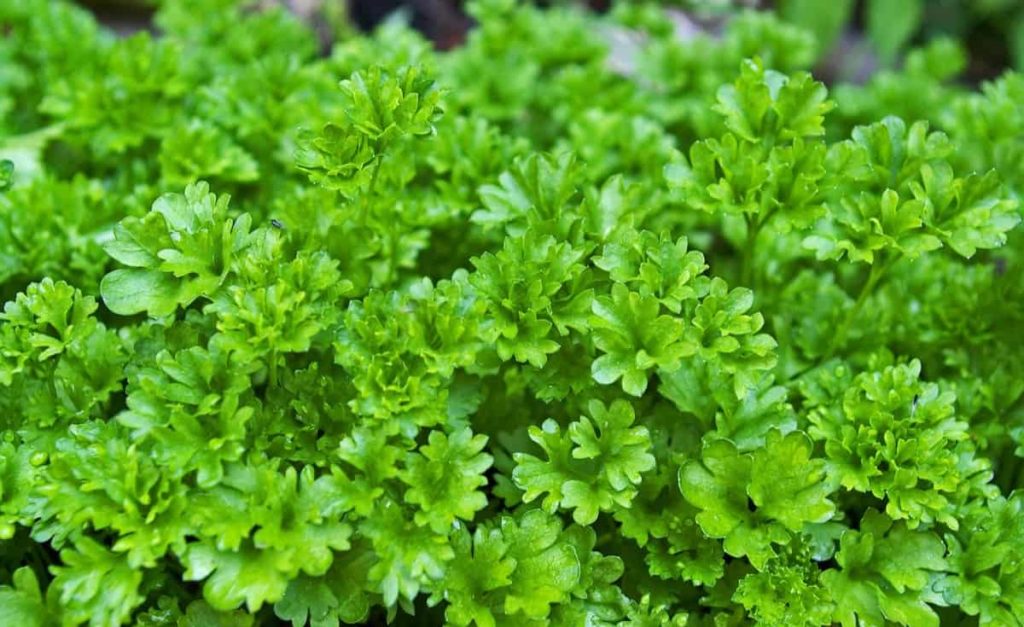
Parsley is a heavy feeder and benefits from some supplementary fertilizer even if it is planted in good soil. When preparing to plant seeds or seedlings, add slow-acting granules of all purposes to the soil to provide stable, consistent nutrition during the season. When fertilizing Parsley, it comes down to the right fertilizer selection.
It needs medium nitrogen and potassium ingredients, which have very little phosphorus. A good fertilizer for Parsley in both bed and pot is on a pure disciplinary basis, mainly organic long-term fertilizer. The nutrients present in it are released only very slowly but are equally by soil organisms, and thus reach plant roots.
Best fertilizer for Parsley
Organic fertilizers for Parsley
Fish and Kelp meal
Fish and kelp include both fish and seaweed fertilizer as well as trace elements and minerals and promote amazing healthy growth with dark green leaves. Fertilizing Parsley is important as you may be constantly harvesting for your food, so they need extra food for new growth. Apply this fertilizer once a week for strong growth.
Blood meal
You can use blood meal fertilizer wherever nitrogen (N) fertilizer is needed. Nitrogen is responsible for the growth and vegetation in plants. A blood meal can quickly fill the amount of nitrogen in the soil. At most, an application will keep it green and lush.
Bone meal
To prepare your ground for Parsley, the layer of about 2 to 4 inches of bone meal and blood meal where you will have rows and until it is about 6 inches deep in the soil.
In case you miss this: Growing Parsley Hydroponically – Nutrients
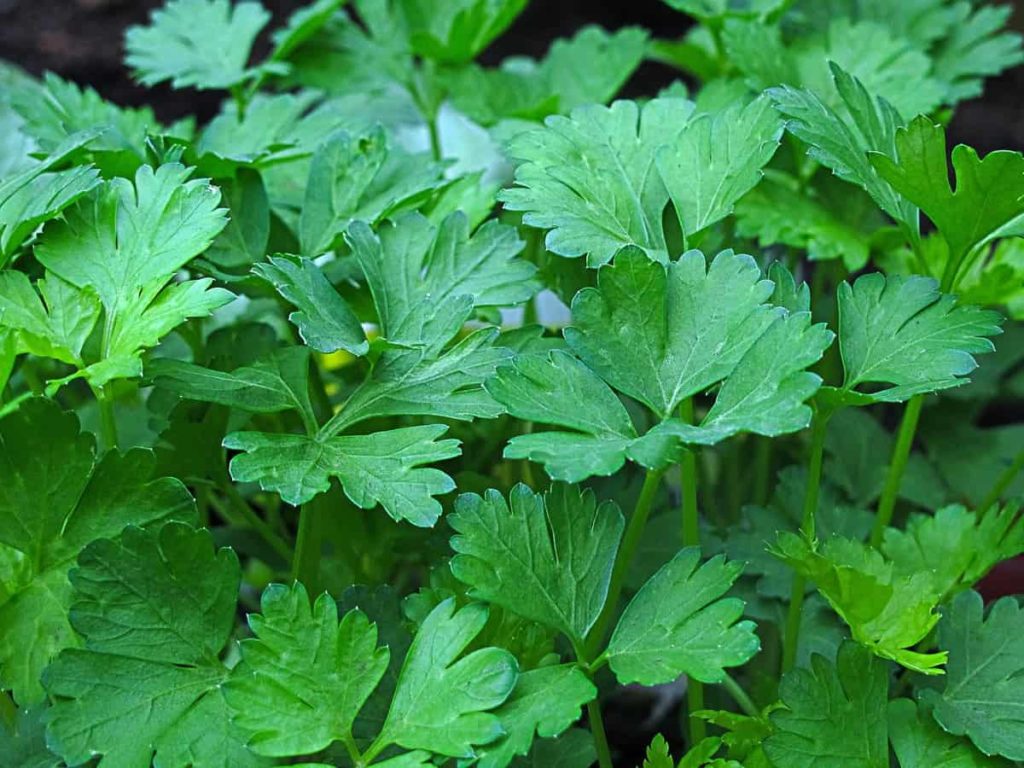
Homemade fertilizers for Parsley
Coffee grounds
Vegetables enjoy coffee grounds and Parsley is not a strange vegetable. The nitrogen content of coffee grounds in the Parsley promotes the growth of leaves. Most parts of Parsley are of leaves, so coffee can contribute to increased ground Parsley production. In addition, coffee grounds support the development of soil microorganisms. Many of these microorganisms break down soil nutrients into forms that can be absorbed by Parsley. If you plan to use coffee ground for Parsley, you can use it as a mulch, fertilizer, or compost.
Epsom salt
Epsom salt is used as a source of magnesium and is used as side-dressing or foliar spray as needed during the growing season. As long as your Parsley is growing well and soil tests have not indicated a lack of magnesium, it is probably not necessary.
Natural fertilizers for Parsley
Once the Parsley plant is several inches long, the addition of mulch fulfills several purposes. First, it composts the Parsley as the mulch dissolves, adding micronutrients to the basic surface of the soil. Second, it helps to keep the soil cool, ideal for Parsley and similar herbs with shallow roots. Third, it prevents weeds that would otherwise fight with Parsley for soil nutrients. Finally, lock its moisture into the dirt. Use grass, straw, or chopped leaves as a mulch for Parsley.
Liquid fertilizers for Parsley
Fish emulsion
If the soil is poor, you may also spray Parsley leaves with dilute liquid fertilizer once a month to ensure healthy growth. Feed plants every two weeks with fish emulation or half-strength liquid fertilizer.
In case you miss this: Growing Parsley from Cuttings, Seeds, Planting, Care
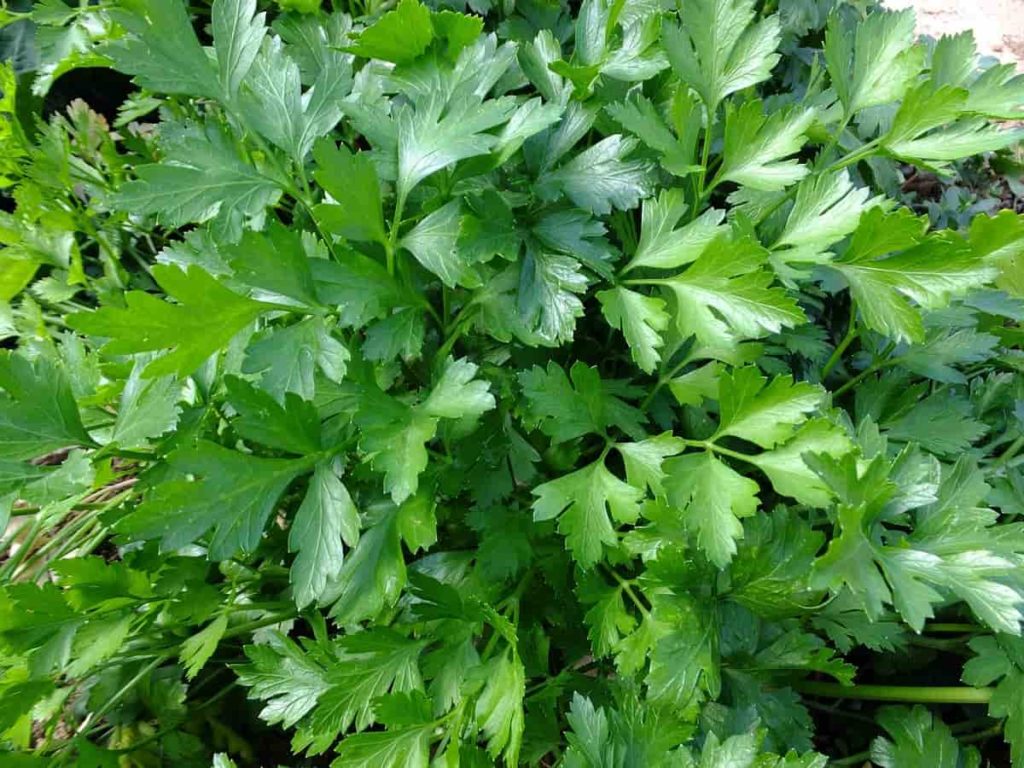
Compost manure for Parsley
Compost
If you have prepared your Parsley bed with well-rotted manure or compost, you will not need extra fertilizer. But if you feel they need to be promoted, you can fertilize them once a month. Dig the garden bed to a depth of 30 centimeters and prepare well. Remove any fabric and stone into a good tilth.
Manure
Dig through some well-aged compost and rotten chicken or cow manure to enrich the soil. Fresh manure has high levels of nitrogen and phosphorus and hence is very hot. Parsley loses its fragrance significantly and the growth of Parsley can be severely restricted through hot, fresh organic fertilizer.
Commercial fertilizers for Parsley
NPK ratio
The rate of application of fertilizer will depend on the soil type. High fertilization rates are often used on well-drained light-structured lands and dirt soils. The suggested NPK ratio of 1-1-1 or 3-1-2 should be used depending on the soil test results. Usually, one-third of the fertilizer is broadcast. There are then two side dressings of NPK fertilizer and soil testing and supplementation with Nitrogen as per crop requirements. A side dressing of nitrogen can be applied after the first heavy crop, as nitrogen promotes leaf growth.
In case you miss this: Top 10 Tips to Protect Plants from Frost: Ideas and Techniques for Beginners
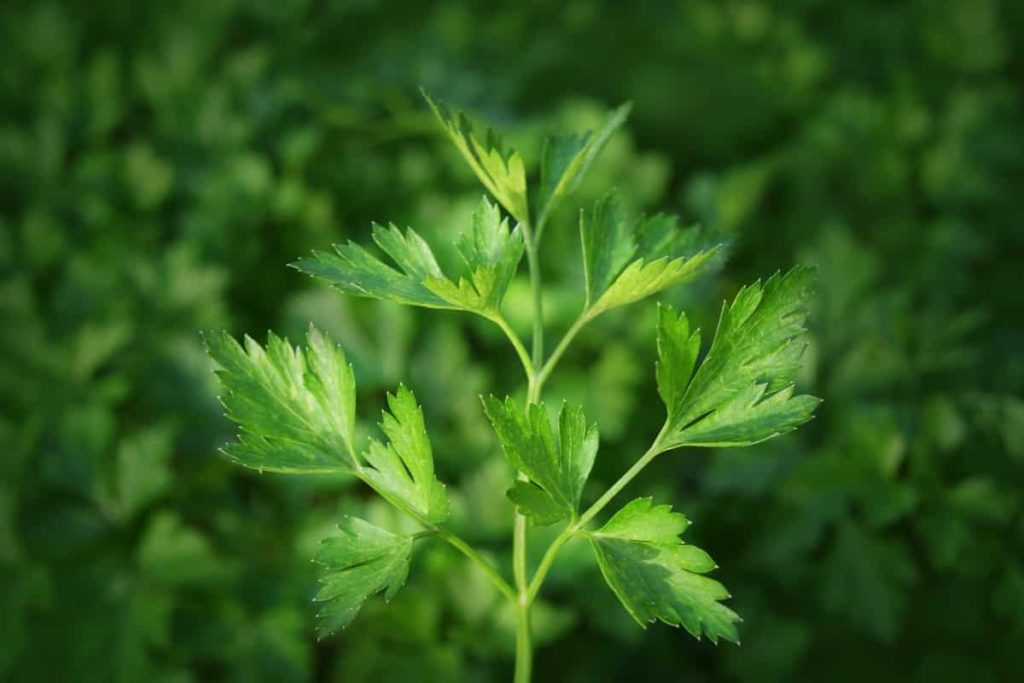
Parsley fertilizer schedule
Fertilizing Parsley is important as you may be constantly pruning for your food, so they need extra food for new growth. Very high nitrogen fertilizers are avoided. To do this, after planting, work the granule fertilizer around the Parsley rows superficially and then water regularly. Apply fertilizer once a week for strong growth. Parsley thrives in soil rich in organic matter and prefers the full sun, although it can withstand some shade.
It should not be allowed to dry. Fertilizing plants in garden beds once a couple of times in a season with a balanced fertilizer. Plants grown from containers will benefit from feeding with fertilizer at half of the recommended power of the label. If grown outside, fertilize every three to four weeks. A good, balanced fertilizer is also required to grow Parsley plants in your garden beds.
While not entirely necessary for its success, Parsley can benefit from a little fertilization once or twice at the start of the growing season. Treat plants once a month in spring dilute up to half the strength with a balanced organic liquid fertilizer; make sure to use something suitable for plants. Alternatively, you can modify your soil with lots of organic matter and fertilizer to boost nutrition.
How to fertilize Parsley in pot
The indoor Parsley plants grown in containers can benefit from similar fertilizing methods. However, they may need a little more fertilizer as plants have less soil to hold on to the nutrients they need. Consider promoting an extra fertilizer if your plants feel the need for it late in the season. Liquid fertilizer can work well for your Parsley plants, especially for those growing Parsley indoors.
In case you miss this: How to Start a Container Garden from Scratch: Creating Ideas, DIY, Tips, and Techniques

Apply a liquid fertilizer every six weeks in the growing season. Since Parsley in container gardens live in a small soil area, gardeners should meet soil nutrient levels more often than those grown directly in the ground. The Parsley grown in a pot inside the house should be fertilized once every six weeks. For Parsley grown in a pot outside, fertilizer applications should go up once every four weeks.
Frequently asked questions about fertilizers for Parsley (FAQ)
Why is my Parsley plant turning yellow?
The most common reason why Parsley is yellow is that the earth is very moist as a result of the boggy ground, overwatering or the Parsley is planted to a pot with no drainage holes at the base. Parsley prefers moist soil with lots of organic matter that allows good drainage.
Why is my Parsley turning red?
Lack of phosphorus can lead to Parsley showing symptoms like red leaves. Parsley thrives well in organic-rich soil. Lack of phosphorus causes a pigment called anthocyanin in the plant. This color is responsible for reddening the leaves of the Parsley plant.
In case you miss this: Top 15 Fast Growing Medicinal Herbs
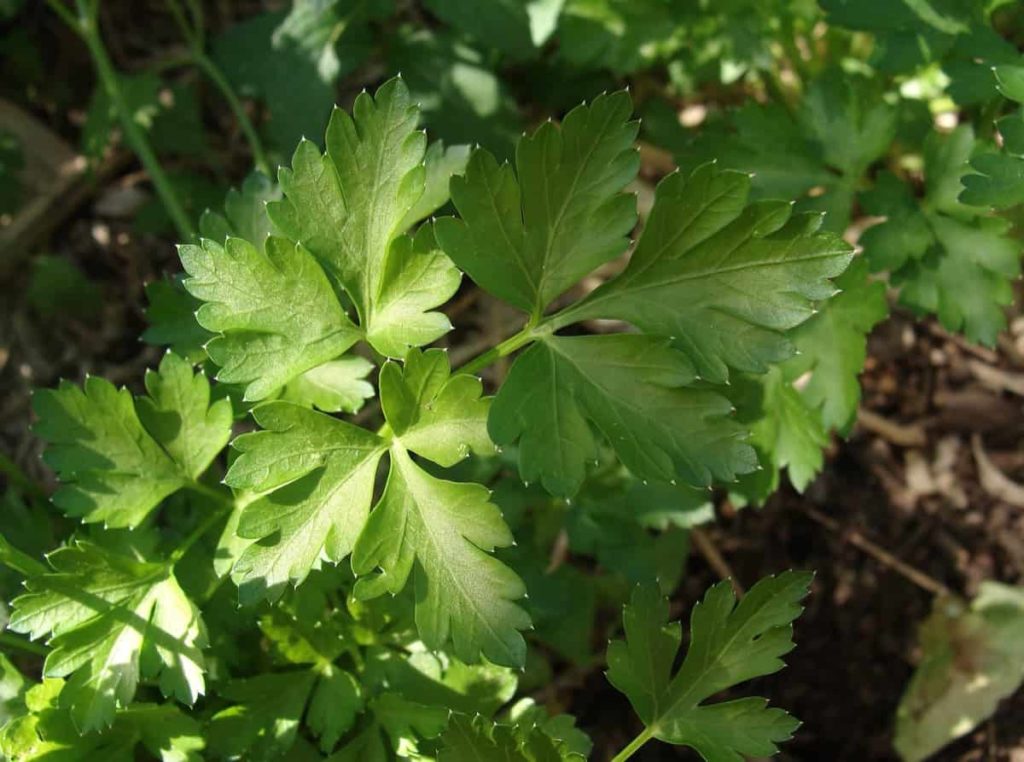
Why are my Parsley leaves turning white?
The reason for Parsley with white leaf tips is dehydration. Just as too much wind or sun can put pressure on the plant, so can drought. Be sure to give your plant an inch of water every week depending on the weather conditions and be constant about watering.
Why is my Parsley bitter?
Old leaves can be bitter, and the stressed, or a second-year plant can be bitter. Parsley plants can stress if the soil is allowed to dry when the temperature is hot, if the soil is not rich enough, or a combination of these factors.
- Organic Gardening on a Budget: Low-Cost Methods and Materials
- Gongura Seed Germination and Planting Methods
- Cabbage Seed Germination and Selection
- Broccoli Seed Germination and Selection
- Asparagus Seed Germination and Variety Selection
- Seasonal Flower Gardening: Best Practices for Spring, Summer, Fall, and Winter
- How to Grow Hibiscus from Flower
- Plantation Ideas for Home Decoration: A Beginners Guide
- Flower Garden Designs and Layouts for Beginners
- Planting and Spacing Techniques in Papaya: A Beginner’s Guide
- Growing Gold: Essential Techniques for Planting Pineapples
- How to Make Kalanchoe Plant Bushy: Home Remedies and Solutions
- 11 Reasons Why Your Gardenia is Not Blooming: Home Remedies and Solutions
- Eco Elegance: The Guide to Designing a Drought-Tolerant Landscape
- Gardening on a Slope: Strategies for Hillside Landscaping
- Nourish and Flourish: Top Organic Mulches for Thriving House Plants
- Everything You Want to Know about Indian Mogra Flower: Discover Uses and Growing
- Green Thumb Success: Expert Tips for Cultivating Greenhouse Pumpkins All Year Round
- Maximize Growth & Flavor: The Ultimate Guide to Companion Planting in Herb Gardens
- How to Control Rhododendron Problems Naturally: Home Remedies and Organic Ways to Fix Them
- Natural Magic: The Remarkable Benefits of Cinnamon for Plants
- Best Steps to Revive Dying Tulip with Natural and Organic Treatment
- 10 Reasons Why Your Angel Trumpet is Not Blooming: Remedies and Treatment
- How to Fix Periwinkle Leaf and Flower-Related Problems: Natural Remedies and Solutions
- How to Fix Zinnias Leaf and Flower Problems: Discover Natural and Home Remedies
- Organic Steps to Induce Lemon Tree Flowers: A Comprehensive Guide
- Bloom Booster: Crafting the Perfect Homemade Bougainvillea Fertilizer
- Optimizing Growth: A Guide to Applying NPK Fertilizer for Potted Plants
- 10 Best Homemade Fertilizers for Rubber Plant: DIY Recipes and Application Method
- How to Boost Female Pumpkin Flowers: Effective Steps for More Flowers and High Yields
- Transform Your Indoor Garden: Top Benefits of Pink Salt for Houseplants
- 10 Best Homemade Fertilizers for Peacock Plants (Calathea): Easy DIY Guide
- Unlock Blooms: 9 Reasons Why Your Potted Chrysanthemum is Not Blooming
- 8 Reasons Why Your Potted Hibiscus is Not Blooming: Fix it with Simple Solutions
- Unlock Blooms: 9 Key Reasons Your Potted Frangipani Won’t Flower
- 10 Reasons Why Is My Ice Plant Not Blooming: Remedies and Treatment